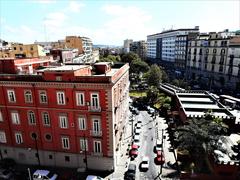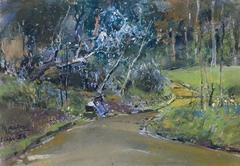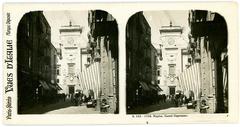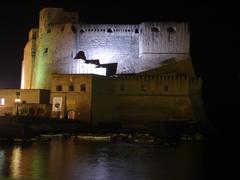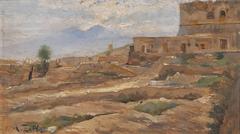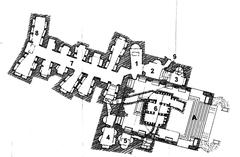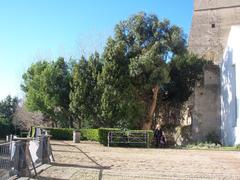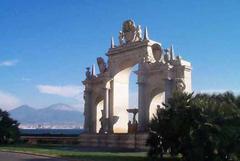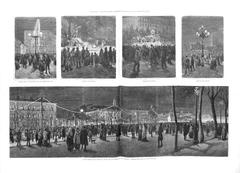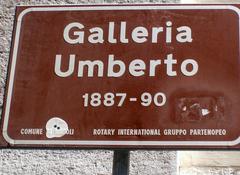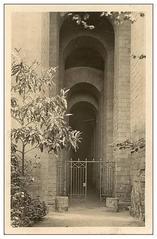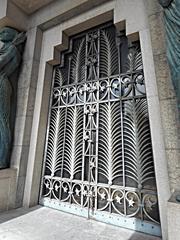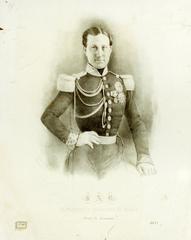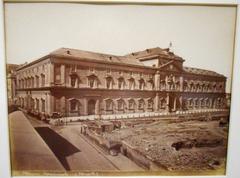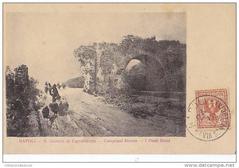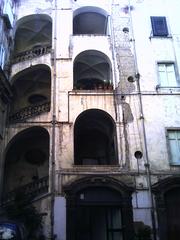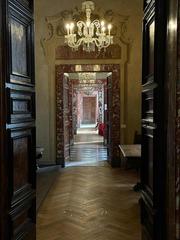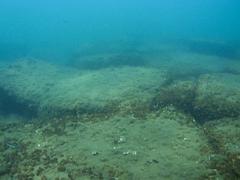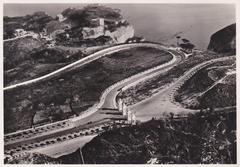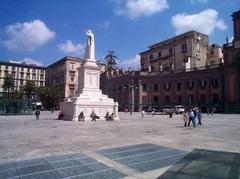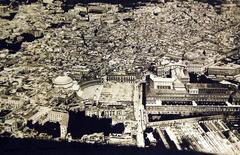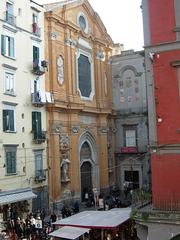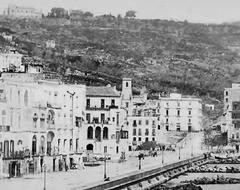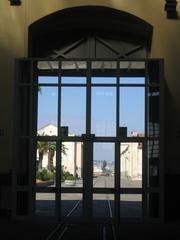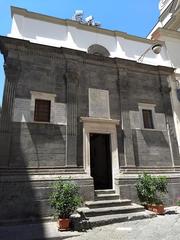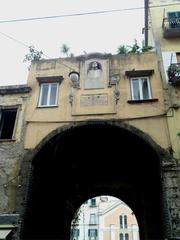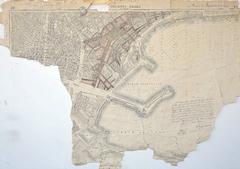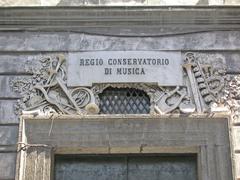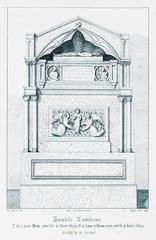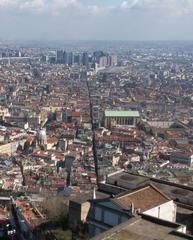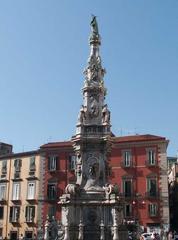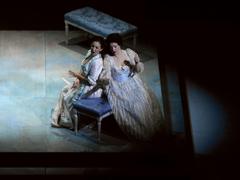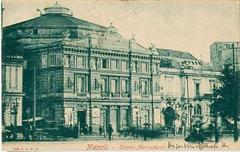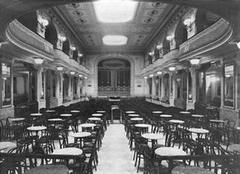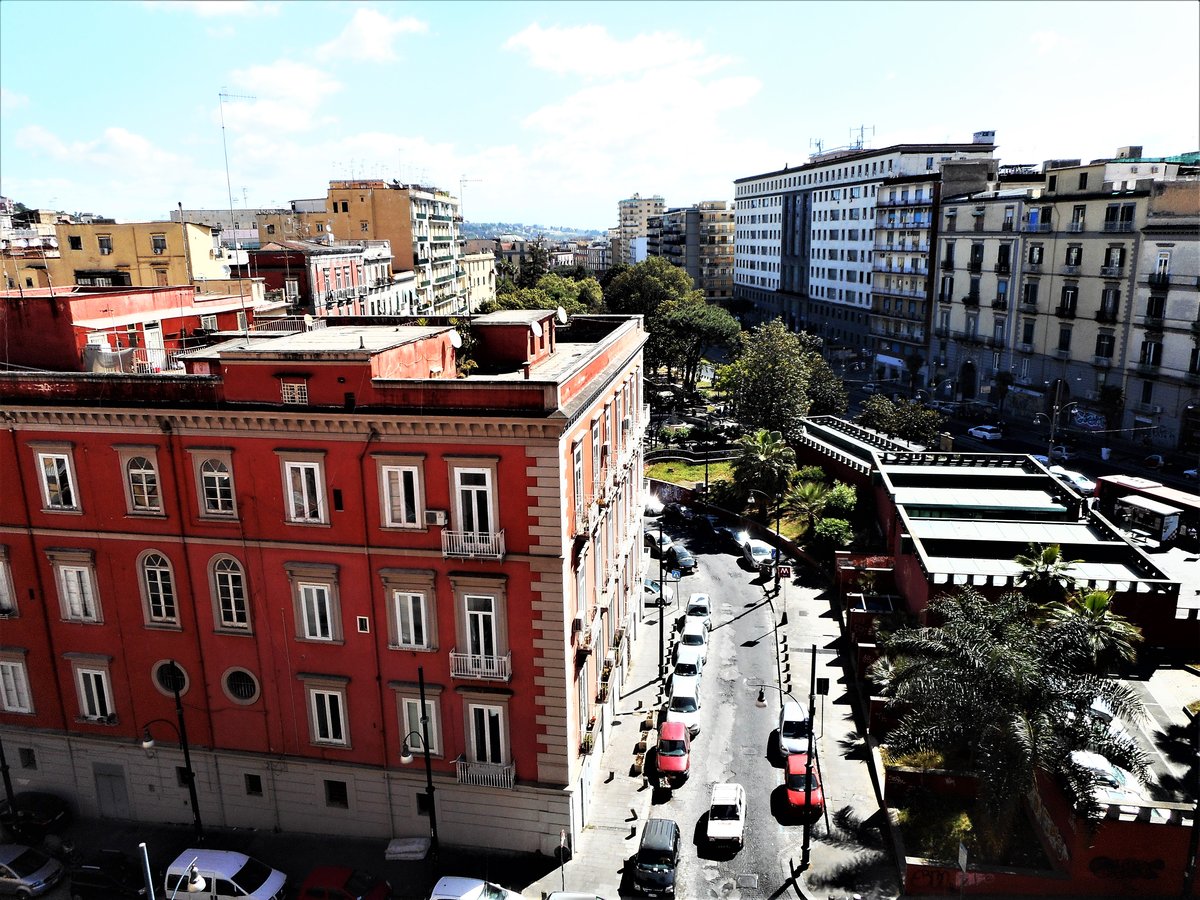
Comprehensive Guide to Visiting Napoli Piazza Cavour, Naples, Italy
Date: 01/08/2024
Introduction
Naples, Italy, is a city renowned for its rich history, vibrant culture, and architectural marvels. Among its many treasures, Piazza Cavour stands out as a testament to the city’s dynamic past and present. Named after Camillo Benso, Count of Cavour, a key figure in the Italian unification movement, this historic square offers a unique blend of neoclassical architecture, cultural significance, and contemporary relevance. Developed in the late 19th century during the Risanamento period, Piazza Cavour not only reflects the aspirations of a newly unified Italy but also serves as a vibrant social and cultural hub for locals and tourists alike (Get Ready for Rome).
Located in the heart of Naples, Piazza Cavour is easily accessible and well-connected by public transport, making it an ideal starting point for exploring the city’s numerous attractions. From the imposing Palace of Justice to the world-renowned National Archaeological Museum, the square and its surroundings offer a rich tapestry of historical landmarks and cultural experiences. Whether you’re a history enthusiast keen on exploring the roots of Italian unification or a casual traveler looking to immerse yourself in the local culture, Piazza Cavour has something to offer for everyone (Nomadic Matt).
Table of Contents
- Introduction
- Origins and Historical Significance
- Architectural Features
- Cultural and Social Impact
- Visitor Information
- Preservation and Modern Developments
- FAQ
- Conclusion
- References
Exploring Piazza Cavour: History, Visitor Tips, and Nearby Attractions in Naples
Origins and Historical Significance
Piazza Cavour, located in the heart of Naples, Italy, is a site rich in historical significance and cultural heritage. Named after Camillo Benso, Count of Cavour, a leading figure in the Italian unification movement, the piazza is a testament to the city’s historical evolution. The square was developed during the late 19th century, a period marked by significant urban expansion and modernization in Naples. This era, known as the Risanamento, aimed to cleanse and rehabilitate the city, which had suffered from overcrowding and poor sanitary conditions.
The piazza’s development coincided with the construction of the nearby Palace of Justice, also known as the “ugly palace” (Palazzaccio), due to its imposing and somewhat unattractive architectural style. The alignment of Cavour’s statue with the northern flank of the Palace of Justice symbolizes the connection between the judicial system and the ideals of justice and unity that Cavour championed (Get Ready for Rome).
Architectural Features
Piazza Cavour is characterized by its neoclassical architecture, which reflects the broader architectural trends of the late 19th century. The statue of Cavour, a prominent feature of the piazza, was designed to face the Palace of Justice, symbolizing his enduring influence on the Italian legal and political systems. The statue itself is a work of art, capturing the likeness of Cavour in a contemplative pose, as if overseeing the judicial proceedings within the palace.
The piazza also features a variety of other architectural elements, including ornate lampposts, benches, and green spaces that provide a serene environment amidst the bustling city. The design of the piazza was intended to create a sense of order and grandeur, reflecting the aspirations of the newly unified Italy.
Cultural and Social Impact
Piazza Cavour has played a significant role in the social and cultural life of Naples. It serves as a central gathering place for locals and tourists alike, offering a space for public events, markets, and social interactions. The piazza’s location near major cultural institutions, such as the National Archaeological Museum of Naples, further enhances its importance as a cultural hub.
The statue of Cavour is not only a tribute to his contributions to Italian unification but also a symbol of the city’s resilience and enduring spirit. The piazza has witnessed numerous historical events, including political rallies, public demonstrations, and cultural celebrations, making it a focal point of civic life in Naples.
Visitor Information
- Visiting Hours: Piazza Cavour is open to the public 24/7, but nearby attractions like the National Archaeological Museum have specific visiting hours.
- Ticket Prices: There is no entry fee for Piazza Cavour itself, but the National Archaeological Museum charges €15 for adults.
- Accessibility: Piazza Cavour is easily accessible by public transportation, with a central Metro stop named after Cavour. This makes it convenient for visitors to reach the piazza from various parts of the city (Get Ready for Rome).
- Nearby Attractions: The piazza’s proximity to the National Archaeological Museum of Naples makes it an ideal starting point for exploring the city’s rich historical and cultural heritage. The museum houses one of the world’s best collections of Greek and Roman artifacts, including treasures from Pompeii and Herculaneum (Nomadic Matt).
- Local Cuisine: Visitors should take the opportunity to sample the local cuisine at the numerous cafes and restaurants surrounding the piazza. Naples is renowned for its culinary delights, particularly its pizza, which originated in the city. A visit to Piazza Cavour offers a chance to enjoy authentic Neapolitan pizza in a historic setting.
- Guided Tours: To gain a deeper understanding of the piazza’s historical and cultural significance, consider joining a guided walking tour. Local guides can provide valuable insights into the history of Piazza Cavour and its role in the broader context of Naples’ development (Nomadic Matt).
- Special Events: During the Christmas season, the piazza hosts festive markets and decorations, creating a vibrant and lively atmosphere.
Preservation and Modern Developments
In recent years, efforts have been made to preserve and enhance Piazza Cavour as part of broader urban renewal initiatives in Naples. The declaration of Naples as a World Heritage site in 1995 prompted a series of renovations and restoration projects aimed at preserving the city’s historical landmarks and improving public spaces (Lions in the Piazza).
These efforts have included the restoration of the statue of Cavour and the surrounding architectural features, as well as the enhancement of green spaces and public amenities. The goal is to maintain the historical integrity of the piazza while ensuring it remains a vibrant and accessible space for both residents and visitors.
FAQ
- What are the visiting hours for Piazza Cavour? Piazza Cavour is open to the public 24/7.
- Are there guided tours available at Piazza Cavour? Yes, guided walking tours are available and provide valuable insights into the history and cultural significance of Piazza Cavour.
- What nearby attractions can I visit? The National Archaeological Museum of Naples, which houses one of the world’s best collections of Greek and Roman artifacts, is located nearby.
- Is there an entry fee for Piazza Cavour? No, there is no entry fee for Piazza Cavour itself.
- What are some local cuisines to try? Neapolitan pizza is a must-try, and there are numerous cafes and restaurants around the piazza offering authentic local cuisine.
Conclusion
Piazza Cavour is more than just a historical square; it is a living testament to Naples’ enduring spirit and rich cultural heritage. From its origins during the Risanamento period to its current role as a bustling public space, the piazza encapsulates the essence of Naples’ past and present. Visitors can marvel at the neoclassical architecture, delve into history at the nearby National Archaeological Museum, and savor authentic Neapolitan cuisine at local eateries (Savoring Italy).
Efforts to preserve and modernize Piazza Cavour ensure that it remains a vibrant and accessible space for both residents and tourists. With its strategic location, historical significance, and cultural vibrancy, Piazza Cavour serves as an ideal gateway to exploring the broader historical and cultural landscape of Naples. Whether you’re visiting during the festive Christmas season or exploring the local markets and guided tours, a visit to Piazza Cavour promises an enriching and memorable experience (Lions in the Piazza).
